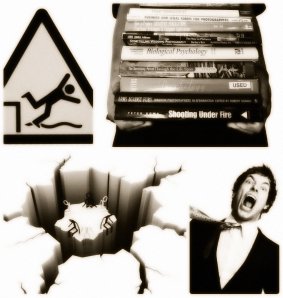With Halloween upon us, what better time to curl up and read a good ghost story—or write one! Today, AuthorHouse presents ten tips for ratcheting up the tension in your own self-published horror tale.
- Make your readers care about your characters (before you kill them off.) If you want your readers to be concerned about the fate of your characters (which helps create tension), they have to care about them! Don’t create cardboard characters whose names might as well be “victim #1,” “victim #2,” etc.

- Try to pick situations that could happen to your reader. What’s one reason that Psycho’s shower scene is so terrifying? Because it’s a situation that we’re all familiar with.
- Keep the monster hidden as long as possible. Something left to the imagination is almost always scarier than something clearly described.
- Read as much horror as you can. Be as familiar with the genre as possible—know what’s been done before, what the conventions are, and take note of what you like (and don’t like) as a reader.
- A little gore goes a long way. Don’t overdo it; your reader will become quickly desensitized.
- Create a small group of trusted readers to review your draft. Listen to their feedback! What worked about the story? What didn’t work?
- You still need a story. Don’t just create a series of scary scenes. Like any other story, you need compelling characters and an interesting plot/ story arc.
- Let it sit for a while before you proofread. Whenever possible, let some time pass between completing your draft and reviewing it. If you can wait at least a few days (but preferably a few weeks,) you’ll be able to read it with a fresh mind.
- Avoid clichés. This is another reason for reading horror as much as possible—you can’t avoid the clichés if you aren’t aware of them.
- Don’t quit! Even the biggest names in horror had their false starts, failures, and set-backs. You probably won’t be any different, so don’t let it stop you! Learn something each time, and aim for incremental improvements.
AuthorHouse hopes you’ve found this useful and entertaining.
Happy Halloween!
via http://authorhousepublishing.wordpress.com
 ']]}
']]}





